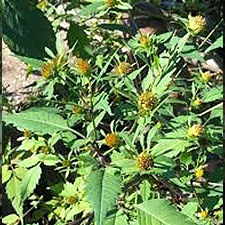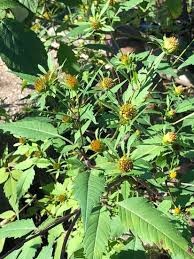 Beggars tick
Beggars tick
Common name: Beggars tick
Botanical name: Bidens frondosa
Management programme: Advisory
Originally from North America. It was introduced to New Zealand most likely through contaminated seed or soil and was recorded as naturalised in 1907.
Why is it a pest?
- Grows fast, particularly in areas of high soil moisture and sun, and in areas of disturbed ground.
- Pushes out existing native plant species and prevents the establishment of new plants.
- Produces barbed seed which can be easily transported on clothing or by animals.
Where is it found?
Often found growing on the edge of water, around drains, ditches or flood plains.
What does it look like?
- An upright annual which can grow to 2m tall.
- It has reddish stems with branches that are arranged opposite to each other.
- Leaves are opposite, divided into three or five leaflets and have toothed edges.
- Small yellow/orange daisy-like flowers occur from November to May.
- Seeds are elongated and have two prongs that are barbed.
What are the rules?
Advisory
Council does not enforce the control of advisory species. It is landowner/occupier responsibility to manage these pests. Council may provide advice on how to manage or control advisory species if required.
How do you get rid of it?
- Hand-pull (all year) – dispose of all seed heads at transfer stations.
- Spray (all year)
CAUTION: When using any herbicide or pesticide, PLEASE READ THE LABEL THOROUGHLY to ensure that all instructions and directions for the purchase, use and storage of the product, are followed and adhered to.
Read more on pest control advice, information and regulations.

